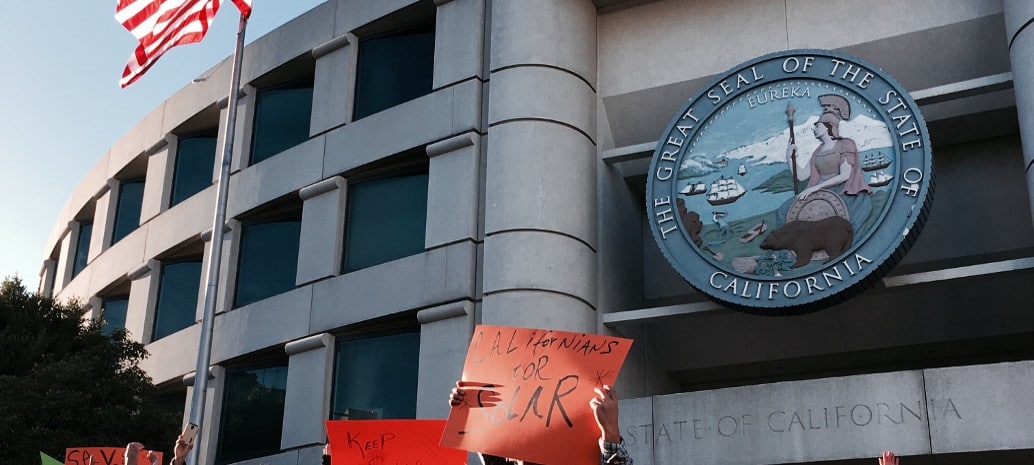Southern California Edison’s (SCE) plans to apply default time-of-use (TOU) rates on its customers starting Jan. 1 may have hit a snag as Administrative Law Judge Sophia J. Park has recommended to the Public Utilities Commission (CPUC) to dismiss the utility’s application.
In her recommendation, Park says SCE’s request for an expedited rollout of default TOU rates wouldn’t allow enough time for the PUC to evaluate the effects on ratepayers from pilot programs currently under way.
TOUs became mandatory for solar users under earlier rulings of the CPUC, and they began for SCE customers on July 1 as part of Net Metering 2.0. The California Solar Energy Industries Association (CALSEIA) has been pushing for a gradual implementation of TOU rates, and this decision could signal that regulators are pushing back against the utilities on the speed of TOU adoption.
“There is not really a big question that this is where the state is headed,” said CALSEIA Executive Director Bernadette del Chiaro in a July 13 interview with pv magazine during Intersolar North America. “What remains to be seen is what the differential is, and the price differential between peak and non-peak, and how dramatic in the early stages that is. We hope that the PUC understands – and regulators – understand that this needs to be a gentle transition.”
For her part, Administrative Law Judge Park cites the 2015 decision by the CPUC requiring all investor-owned utilities (IOU), include SCE, to submit plans for going to default TOU rates by Jan. 1, 2018, for implementation in 2019 after approval. In that decision, the CPUC required pilot programs for opt-in TOU rates, to be followed by default TOU rate pilots.
SCE is asking for an expedited rollout to accommodate an upgrading of its customer service software platform, which it says would delay the transition of its customers to TOU rates until the the third quarter of 2020. SCE proposed doing the rollout of its default TOU rates in two waves, with the first wave occurring in the fourth quarter of 2018 and affecting 1.6 million customers.
“Accelerating the timeline for residential default TOU would not allow sufficient time for completion of the implementation steps required by the [CPUC] prior to the rollout of default TOU,” Park wrote. “Moreover, in order to have sufficient time to implement Wave 1, SCE requests an expedited procedural schedule for its application with a final Commission decision by November 2017. Such a compressed timeline would not give sufficient opportunity for the Commission or stakeholders to give due consideration to the various issues raised in the application and protests.”
Under the original CPUC decision, the first report on the opt-in TOU pilots – which began in June 2016 – was delivered in April. A second interim report is due in November, and a final report is expected to be issued at the end of the first quarter of 2018. Meanwhile, the pilots of default TOUs aren’t even scheduled to begin until March 2018, with the initial results to be reported next fall. The second set of results covering March 2018 through March 2019 is expected to be issued in the summer of 2019.
The CPUC will consider Park’s recommendations at its Aug. 24 business meeting.
This story was amended on July 25 at 10:35 am to reflect that TOUs are already mandatory for solar customers under Net Metering 2.0 and to add CALSIEA Executive Director Bernadette del Chiaro’s comments.
This content is protected by copyright and may not be reused. If you want to cooperate with us and would like to reuse some of our content, please contact: editors@pv-magazine.com.








By submitting this form you agree to pv magazine using your data for the purposes of publishing your comment.
Your personal data will only be disclosed or otherwise transmitted to third parties for the purposes of spam filtering or if this is necessary for technical maintenance of the website. Any other transfer to third parties will not take place unless this is justified on the basis of applicable data protection regulations or if pv magazine is legally obliged to do so.
You may revoke this consent at any time with effect for the future, in which case your personal data will be deleted immediately. Otherwise, your data will be deleted if pv magazine has processed your request or the purpose of data storage is fulfilled.
Further information on data privacy can be found in our Data Protection Policy.